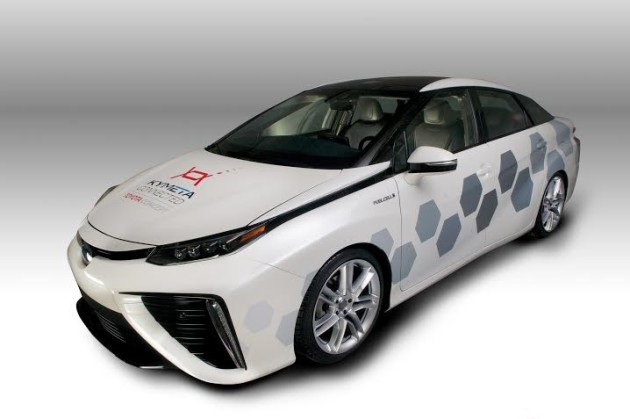
Redmond-based Kymeta Corp. and Toyota took the wraps off their collaboration on a satellite antenna system that can send data to cars at broadband speeds.
Toyota’s antenna-equipped, hydrogen-powered Mirai fuel-cell vehicle was unveiled today at the North American International Auto Show in Detroit. The prototype communication system can download satellite data at 50 megabits per second, which is better than typical LTE wireless service. The transmission speed is expected to rise past the gigabit-per-second mark within a few years.
Kymeta said Mirai Creation Investment Limited Partnership, a Japan-based fund in which Toyota participates, is providing a strategic investment to push the initiative along. The company declined to specify how much is being invested, other than to say that the amount is significant. On Monday, Kymeta said it closed a $62 million investment round that includes money from Mirai.
For now, the satellite antenna system is being installed on Mirai research vehicles, but not on cars being sold to customers. Kymeta President and CEO Nathan Kundtz said that status is likely to change within the next couple of years.
“Toyota wants it as soon as they can possibly have it,” Kundtz told GeekWire last week during an interview at Kymeta’s headquarters. He pointed out that Mirai is the Japanese word for “future.”

Kymeta was spun out from Intellectual Ventures in 2012 with investments from Microsoft founder Bill Gates, Lux Capital, Liberty Global and other venture-capital heavyweights.
The car antennas are 6-inch-wide, six-sided panels that can be installed as modules in a car’s roof. The system requires less than 10 watts of power, Kundtz said. If you need more bandwidth, more modules go into the roof.